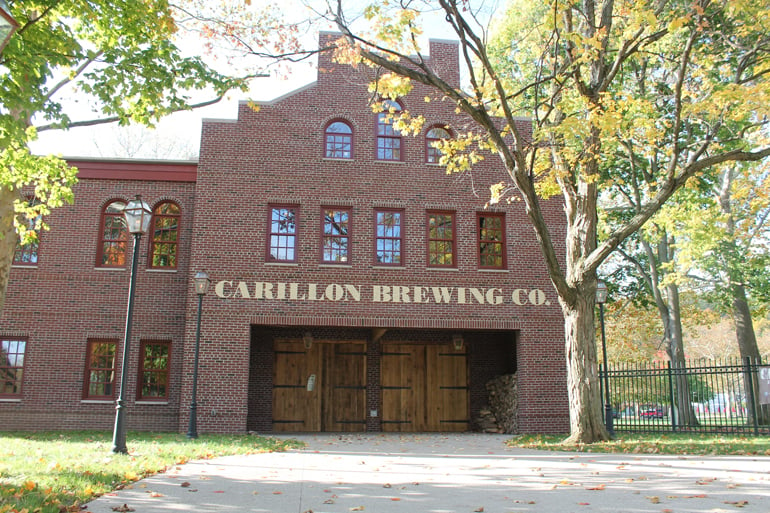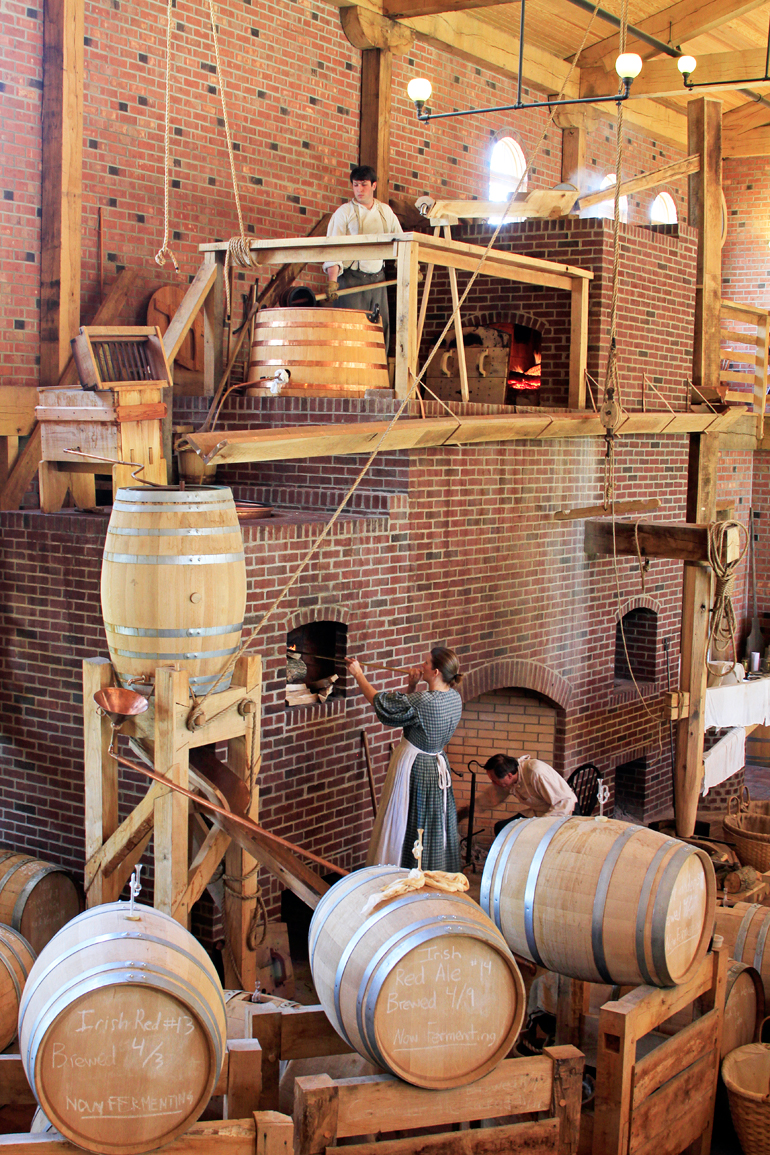Start 14-Day Trial Subscription
*No credit card required

Antebellum Ales: Carillon Brewing Company Tour
Ever thought about time travel? If visiting the past were possible, it’s likely that most readers would wander into a pub to try the beer. Imagine comparing today’s beers with their predecessors, discovering how they smelled and tasted.
Time travel doesn’t exist, but one can fly to Dayton, Ohio to delve into beer’s past. Dayton is home to the country’s only historic production brewery, Carillon Brewing Company. Part museum, all brewery, Carillon is a unique product of Dayton History, a non-profit committed to preserving the Gem City’s past. The brewery is the latest addition to the 65-acre Carillon Historical Park, which features buildings and exhibits that date from the city’s founding in 1796 to the present, including one of the Wright Brothers’ flyers.
After years of painstaking research into historical construction, brewing techniques, and recipe formulation, Carillon Brewing Company opened in 2014. Brewster Tanya Brock (one of Ohio’s few female head brewers) resurrects historical styles from the 1850s, employing the same processes brewers of that time would have used. Beers such as Coriander Ale, Squash Ale, and Beet Rye ale, as well as a “small beer” that approximates what everyday citizens would have consumed rather than the unsafe, cholera-infected water of that time period, provide an experience unlike any brewery in the country, possibly the world.

Brewers at Carillon resurrect historical styles from the 1850s, employing the same processes brewers of that time would have used.
The Brewery
The time travel starts with the building itself, which replicates a mid-19th century Midwestern brewery. “Everything from the nails that hold the building together to the food that we serve and the beer that we make takes you back to the 1850s,” describes Brock. All of the details are designed “to give you an idea of not just what beer tasted like at the time and the process of how it was made,” Brock explains, but also to provide “an immersive experience, to let you experience all the sights and sounds and smells and the feeling of what was going on in the 1850s with brewery production.”
Brock’s brewery achieves its goal, pairing a sensory experience with her historic ales. The first impression is the smell. The beer is brewed over charcoal hearths, and opening the front door yields campfire mingling with the sweet aromas of mashing grains and baking bread. The next impressions are visual. Volunteers in period costumes work the kettles, while others churn butter or tend the fireplaces. The walls are exposed brick and wood, and all of the hardware, down to every visible nail, authenticates the experience.
Volunteers in period costumes work the kettles, while others churn butter or tend the fireplaces. The walls are exposed brick and wood, and all of the hardware, down to every visible nail, authenticates the experience.
A large, three-tiered hearth dominates the main room. One look tells visitors that this is not a modern brewery – there are no stainless tanks, no pumps, and no hoses. Instead, atop each brick tier rests brewing vessels, kettles clad in wood. This system approximates a historic brewing approach that would have spanned multiple floors. Carillon’s system is a cut-away that allows visitors to view the full scale of the operation at once.
As would have been true in the 1850s, Carillon produces beer the really hard way, doing much of the work by hand. Brock explains that the process begins at the top tier, where a charcoal-fired hearth heats strike water. “We start at about 9:30 a.m., bring it up to temperature. Then we hand-ladle it, one gallon at a time, through a trough that feeds into our mash tun, so we can starting our mashing. From there, in that isolated, insulated vessel, the wort will then be drained off. We fly-sparge, so again, one gallon at a time, sprinkling over the top. We lauter right into our boil kettle, which is the third layer. The boil kettle has yet another firebox under it for charcoal and wood fire. We bring it up to a boil, adding the hops at that point.” Then, they flame out, literally shoveling the fire out.
The final steps extend the use of manual labor and gravity. “Then [we] whirlpool in the boil kettle, ladle it once again into our cooling spiral, our cooling barrel,” Brock continues. “That barrel fills with ice-cold water via the long trough in front of the furnace. Hot wort travels through the spiral, and there, at that point, we use the gravity to let it flow into the top barrels to ferment for one week, rack it down into a bottom barrel and condition for two more weeks.”



